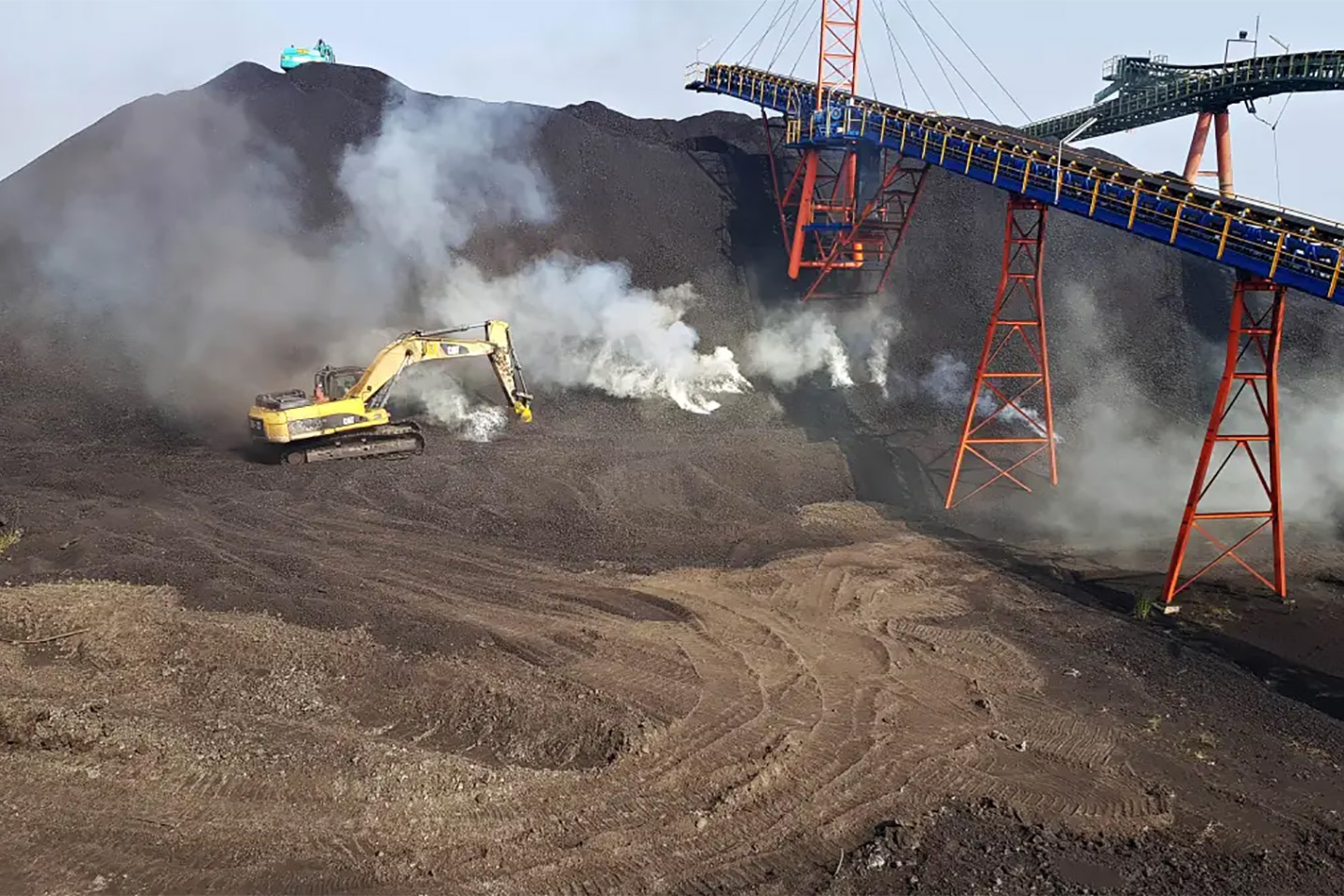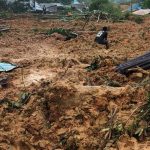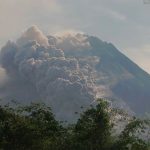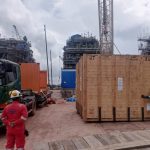Liga Asuransi – Dear readers, how are you? I hope your business is running well as expected.
Let’s continue the discussion about risk management and insurance. This time we will review the risks and insurance for the coal stock at the stockpile.
For the new readers, I want to welcome you. On this website, we focus on risk management and insurance. We have a hundred articles; please click the heading on the right and lefts of this page. If you are interested, please share it with your friends so they can also know like you.
As we all know that risk management and insurance are essential for individuals and businesses to protect themselves from potential financial losses due to unforeseen events or accidents.
Businesses can improve their financial stability and achieve greater peace of mind by properly managing risks and obtaining adequate insurance coverage.
As a senior insurance broker, I will review the risks and the proper insurance arrangement for the coal stock in the stockpile.
The amount of stock and its value in USD in each stockpile can be significant. It ranges between hundreds to thousands of tons and between USD 1 to USD 25 million, depending on the price of coal.
If a fire happens, so much value will be lost in a split second.
Sometimes the stock of coal is also under the mortgagee of the banks, and banks ask for an insurance policy for the coal stock.
UNDERSTANDING THE RISKS OF COAL AT STOCKPILE
Coal stockpiles are stored before being transported to vessels, power plants, or other industrial facilities. While they are essential to the coal supply chain, coal stockpiles can pose several risks. Here are some of the most significant risks:
Therefore, it isn’t easy to estimate the average value of coal in a stockpile without more specific information about the type and quality of coal and the current market conditions.
The following are the risks of a coal stockpile:
- Fire risk
Coal is a combustible material and can ignite when exposed to heat or a spark. When coal is stored in large piles, the heat generated by the coal can build up and ignite the surrounding coal, causing a fire. Coal fires are difficult to control and can burn for weeks or even months, releasing harmful gases and particulates into the air.
- Spontaneous combustion
Coal can undergo spontaneous combustion, which ignites without an external source of heat or flame. This can occur when coal is stored for long periods or exposed to air and moisture. Spontaneous combustion can also cause coal fires and release harmful gases.
- Environmental risk
Coal stockpiles can release dust and other particulates into the air, contributing to air pollution and harming human health. They can also contaminate nearby waterways if they are not adequately managed and protected.
- Structural failure
Large coal stockpiles can load a significant weight on the ground beneath them. This can cause the soil to settle or collapse, leading to structural failure and potential injuries or fatalities.
- Economic risk
If a coal stockpile is damaged or destroyed by fire or other hazards, it can disrupt the supply chain and lead to shortages and price increases. This can have a significant economic impact on industries that rely on coal for their operations.
To mitigate these risks, coal stockpiles must be appropriately managed and maintained. This includes regular inspections, temperature and moisture levels monitoring, proper drainage and ventilation, and adequate fire suppression systems.
UNDERSTANDING THE COAL SELF-COMBUSTION AND FIRE RISKS
Coal stockpiles pose a significant fire risk due to the combustible nature of coal. Coal can ignite when exposed to heat or a spark, and when it is stored in large piles, the heat generated by the coal can build up and ignite the surrounding coal, causing a fire. Here are some key factors that contribute to the fire risks of coal stockpiles:
- Temperature
Coal can reach high temperatures due to the natural process of oxidation. This can happen even when the coal is not exposed to an external heat source. When coal is stored in large piles, the heat generated by the coal can build up and reach temperatures high enough to cause spontaneous combustion.
- Oxygen
Coal needs oxygen to burn; when stored in large piles, it can be exposed to air and oxygen. This can lead to the natural oxidation process, which generates heat and can lead to spontaneous combustion.
- Moisture
Moisture can contribute to the fire risks of coal stockpiles in two ways. First, moisture can react with coal to release heat, leading to spontaneous combustion. Second, moisture can increase the risk of electrical discharge, igniting the coal.
- Ignition sources
Ignition sources such as sparks, open flames, and hot surfaces ignite coal stockpiles. These sources can come from equipment used to move the coal, welding or cutting operations nearby, or even lightning strikes.
HOW TO MANAGE THE FIRE OF COAL STOCKPILES
Managing the fire risks of coal stockpiles is critical to preventing potentially catastrophic fires and minimizing the damage if a fire does occur. Here are some critical strategies for managing the fire risks of coal stockpiles:
- Fire prevention
The best way to manage the fire risks of coal stockpiles is to prevent fires from starting in the first place. This can be accomplished by implementing regular inspections, monitoring of temperature and moisture levels, proper drainage and ventilation, and adequate fire suppression systems. Fire prevention measures should be tailored to the specific site and risks of the coal stockpile.
- Early detection
Early fire detection is critical to preventing it from spreading and causing significant damage. Early detection can be achieved through temperature monitoring equipment, smoke detectors, and other fire detection systems. These systems should be regularly tested and maintained to ensure they function correctly.
- Emergency response
Even with the best fire prevention measures in place, fires can still occur. It is essential to have an emergency response plan in place to minimize the damage and ensure personnel safety. This plan should include procedures for notifying emergency services, evacuating the area, and controlling the fire.
- Fire suppression
If a fire does occur, quick and effective suppression is critical to preventing it from spreading. Coal stockpiles should have fire suppression systems like water sprinklers, foam, and dry chemical systems. These systems should be properly designed, installed, and maintained to ensure they are effective.
- Proper storage
Proper storage of coal can also help prevent fires. Coal should be stored to minimize the risk of spontaneous combustion, such as keeping the stockpile as small as possible, ensuring proper drainage, and avoiding stacking the coal too high.
- Training and Education
Personnel who work with coal stockpiles should receive training on the risks associated with coal fires and how to prevent and respond to them. This training should be ongoing to ensure that person knows the latest best practices and technologies.
Fire Extinguishing of a coal Process of Stockpile
Putting out a fire in a coal stockpile can be challenging and dangerous, but several methods can be used to extinguish the fire. The choice of method will depend on the size and location of the fire, as well as the available equipment and resources. Here are some standard techniques used to put out fires in coal stockpiles:
- Water
Water is the most common method for extinguishing coal fires. Water can be applied to coal burning with hoses, sprinklers, or foam systems. Water can cool down the coal, reduce the temperature, and also helps to displace oxygen and prevent the fire from spreading.
However, water is not always effective in extinguishing deep-seated fires, and in some cases, it can even make the fire worse by creating steam and increasing the internal pressure within the coal pile.
- Foam
Foam is a specialized fire suppression agent that can be more effective than water for extinguishing coal fires. Foam blankets the coal and forms a barrier between the coal and oxygen, preventing the fire from spreading. The foam also has cooling properties and can reduce the temperature of the coal pile. Foam systems are often used with water to create a more effective fire suppression solution.
- Dry chemical powder
The dry chemical powder can also be used to extinguish coal fires. This method involves applying a dry chemical powder to the burning coal pile, which creates a chemical reaction that extinguishes the fire. The dry chemical powder can effectively extinguish deep-seated fires but also generate much dust and potentially harm the environment.
- Excavation
Sometimes, the only way to extinguish a coal fire is to excavate and remove the burning coal from the stockpile. This method is time-consuming and expensive, but it can prevent the fire from spreading and causing further damage.
Regardless of the method used to extinguish the fire, it is critical to have a well-planned and coordinated approach to fire suppression, with trained personnel and adequate equipment. Monitoring the coal pile after extinguishing the fire is also essential to ensure it does not reignite.
THE EXAMPLES OF COAL STOCKPILE FIRES IN THE LAST FIVE YEARS
There have been several coal stockpile fires reported in the last five years. Here are a few examples:
- In April 2016, a coal stockpile caught fire at a power plant in the Philippines. The fire reportedly started due to spontaneous combustion, and it took firefighters several hours to bring it under control.
- In September 2020, a fire broke out at a coal stockpile in a South Kalimantan province port. The fire reportedly started due to spontaneous combustion, and it took firefighters several days to extinguish the flames.
- In August 2019, a coal stockpile caught fire at a power plant in East Java province. The fire reportedly started due to spontaneous combustion, and it took firefighters several hours to bring it under control.
- In July 2019, a coal stockpile caught fire at a port in East Java province. The fire reportedly started due to a lightning strike, and it took firefighters several hours to extinguish the flames.
- In February 2018, a coal stockpile caught fire at a port in East Kalimantan province. The fire reportedly started due to spontaneous combustion, and it took firefighters several days to bring it under control.
- In November 2017, a coal stockpile caught fire at a port in East Java province. The fire reportedly started due to spontaneous combustion, and it took firefighters several hours to extinguish the flames.
These incidents demonstrate the importance of taking proper fire prevention measures in coal stockpiles to prevent the risk of fires and the need for adequate fire protection equipment and training to minimize the damage in case of an accident.
THE INSURANCE COVERAGE FOR COAL STOCKPILE INSURANCE
Coal stockpile insurance typically covers the physical loss or damage to the coal stockpile caused by certain events or perils, subject to the terms and conditions of the policy. Some of the events or perils that may be covered under coal stockpile insurance include:
- Fire, explosion or lightning
- Earthquake, storm or flood
- Theft or malicious damage
- Riot or civil commotion
- Aircraft or vehicle impact
- Water damage
- Collapse or accidental damage
The coverage may include additional benefits such as debris removal, business interruption losses, and liability protection for third-party damages caused by the coal stockpile or its operations.
WHY DO COAL MINING COMPANIES NEED TO USE INSURANCE BROKERS FOR ALL THEIR INSURANCE NEEDS?
For several reasons, coal mining companies need an insurance broker for all their insurance needs. First, coal mining is a dangerous industry with high risks of accidents, injuries, and property damage. As a result, coal mining companies face significant liability and require comprehensive insurance coverage to protect their assets and operations.
An insurance broker is an expert in risk management and insurance who can help coal mining companies navigate the complex insurance market and find the most suitable coverage for their needs. They can also negotiate with insurers on behalf of coal mining companies to obtain the best terms and conditions, including lower premiums and higher coverage limits.
Furthermore, insurance brokers can assist coal mining companies in identifying and mitigating potential risks to prevent accidents and losses from happening in the first place. They can advise and guide on safety measures, compliance with regulations, and best practices to reduce the likelihood of claims and liability.
Finally, an insurance broker can help coal mining companies manage their insurance policies efficiently by keeping track of renewal dates, ensuring the policies are current, and providing support in case of claims. This can save time and resources for coal mining companies, allowing them to focus on their core operations and growth strategies.
One of the leading insurance brokers in Indonesia focusing on the coal mining industry is L&G Insurance Broker.
For all your insurance needs, please call L&G now!
—
LOOKING FOR INSURANCE PRODUCTS? DON’T WASTE YOUR TIME AND CALL US RIGHT NOW
24-HOUR L&G HOTLINE: 0811-8507-773 (CALL – WHATSAPP – SMS)
website: lngrisk.co.id
E-mail: customer.support@lngrisk.co.id
—







![[RECAP WEBINAR: Heavy Eqipment, Heavy Risk]
Dalam industri konstruksi dan pertambangan, alat berat bekerja di lingkungan penuh risiko. Mulai dari perpindahan antar lokasi, operasi di medan ekstrem, hingga potensi kecelakaan dan kerusakan mekanis. Tanpa perlindungan yang tepat, kerugian yang muncul bisa mencapai ratusan juta hingga miliaran rupiah.
Webinar ini membahas secara mendalam:
✅ Risiko utama yang mengancam alat berat di proyek konstruksi & tambang
✅ Jenis perlindungan penting seperti CPM (Contractor’s Plant & Machinery) dan Equipment All Risks
✅ Klausul yang sering terlewat oleh pemilik alat dan perusahaan rental
✅ Peran krusial broker asuransi dalam memastikan penutupan polis tepat dan klaim berjalan mulus
Dengan jaminan asuransi alat berat yang sesuai, operasional proyek Anda tetap aman, efisien, dan terlindungi dari kerugian besar.
📣 Nantikan webinar edukatif berikutnya dari L&G Insurance Broker untuk memperluas wawasan Anda tentang manajemen risiko di industri konstruksi dan alat berat! Follow akun kami dan aktifkan notifikasi agar tidak ketinggalan😉
#webinargratis #onlinewebinar #webinar #AsuransiAlatBerat #HeavyEquipment #CPMInsurance #MiningSafety #BrokerAsuransi #AmanBersamaLNG](https://scontent-yyz1-1.cdninstagram.com/v/t51.82787-15/583486524_18408253015184229_1382819462085136671_n.jpg?stp=dst-jpg_e35_tt6&_nc_cat=105&ccb=7-5&_nc_sid=18de74&efg=eyJlZmdfdGFnIjoiQ0FST1VTRUxfSVRFTS5iZXN0X2ltYWdlX3VybGdlbi5DMyJ9&_nc_ohc=LEFLS1E6-n4Q7kNvwGkDmyY&_nc_oc=AdnNy0zp0yC2tU0WPBFouFKVjuKRuwBFqR0UNGy6wHFxS6WpLLLJGtM4B1Fzr8Mrd17mFA0DjZunYhLtsFuHsij8&_nc_zt=23&_nc_ht=scontent-yyz1-1.cdninstagram.com&edm=ANo9K5cEAAAA&_nc_gid=oSeaLBWaR-XQBec5hvxCrg&oh=00_Afkx-0gMbHtcHjqh0tCatfkjYDi6lnE953VfIoObFA0qhQ&oe=69458CEF)
![[HADIRI WEBINAR GRATIS]
L&G Academy Online Webinar: Heavy Equipment, Heavy Risk! Wajibnya Perlindungan Asuransi Alat Berat bagi Kontraktor dan Pemilik Alat
Dalam proyek konstruksi dan pertambangan, alat berat adalah aset bernilai tinggi yang menjadi tulang punggung operasional. Namun, kerusakan, kecelakaan, atau kehilangan alat di lapangan bisa menimbulkan kerugian besar dan menghentikan pekerjaan di tengah jalan.
Banyak kontraktor dan pemilik alat baru sadar pentingnya asuransi setelah kerugian terjadi. Padahal, perlindungan yang tepat bisa menjadi penyelamat bisnis.
🎙️ Narasumber:
Mhd. Taufik Arifin
CEO & Founder L&G Insurance Brokers
Lebih dari 40 tahun pengalaman menangani asuransi alat berat, marine, dan proyek besar di Indonesia
📅 Rabu, 12 November 2025
🕙 10.00 WIB – selesai
📍 Live via Zoom
💰 GRATIS! Kuota terbatas
🔗 Registrasi di: bit.ly/3JuYYfh
📲 Daftar sekarang sebelum Anda menyesal jadi salah satu yang “baru sadar setelah rugi besar.”
📞 0811-8507-773
#webinargratis #webinaralatberat #onlinewebinar #kelaswebinargratis #mining #miningequipment #heavyequipment #alatberat #heavyequipmentinsurance #CPM](https://scontent-yyz1-1.cdninstagram.com/v/t51.82787-15/572482319_18404442202184229_2761295381299065355_n.jpg?stp=dst-jpg_e35_tt6&_nc_cat=110&ccb=7-5&_nc_sid=18de74&efg=eyJlZmdfdGFnIjoiRkVFRC5iZXN0X2ltYWdlX3VybGdlbi5DMyJ9&_nc_ohc=YBfuRTABJ5wQ7kNvwEW7q4b&_nc_oc=Adkvywr5WKX6XNcVupQZSVipyaZqfSkpP0dNa7mntKR8bncwCn3olM6crU_KE5LbWJpJpmFdBkCbEoW954Tt7cVM&_nc_zt=23&_nc_ht=scontent-yyz1-1.cdninstagram.com&edm=ANo9K5cEAAAA&_nc_gid=oSeaLBWaR-XQBec5hvxCrg&oh=00_AfmiY4iIbjZ5sEt0hfrf_22YP5cfD6B2RXuaavJfW9Hw9g&oe=694586FF)










